Lava Lamp Simulation
Alex Jiang, Rylan Lee, Michael Rehmet, Bisheshank Aryal
Simulating lava lamps via multi-fluid smoothed particle hydrodynamics, following this method.
Hand-drawn Stylization of 3D Animations
Sherry Zhang, Vivian Li, Lexi Henrion, Apoorva Talwalkar
Example-based stylization of 3D animations to make them look hand-drawn, following this method.
3D Fluid Simulation
Jue Han, Tianxing Ji, Akash Singirikonda, Xiaoxi Yang
Interactive 3D fluid simulation, following this method.
Differentiable Pathtracing of Signed Distance Functions
Eric Chen, Ethan Williams, Jiayi Li
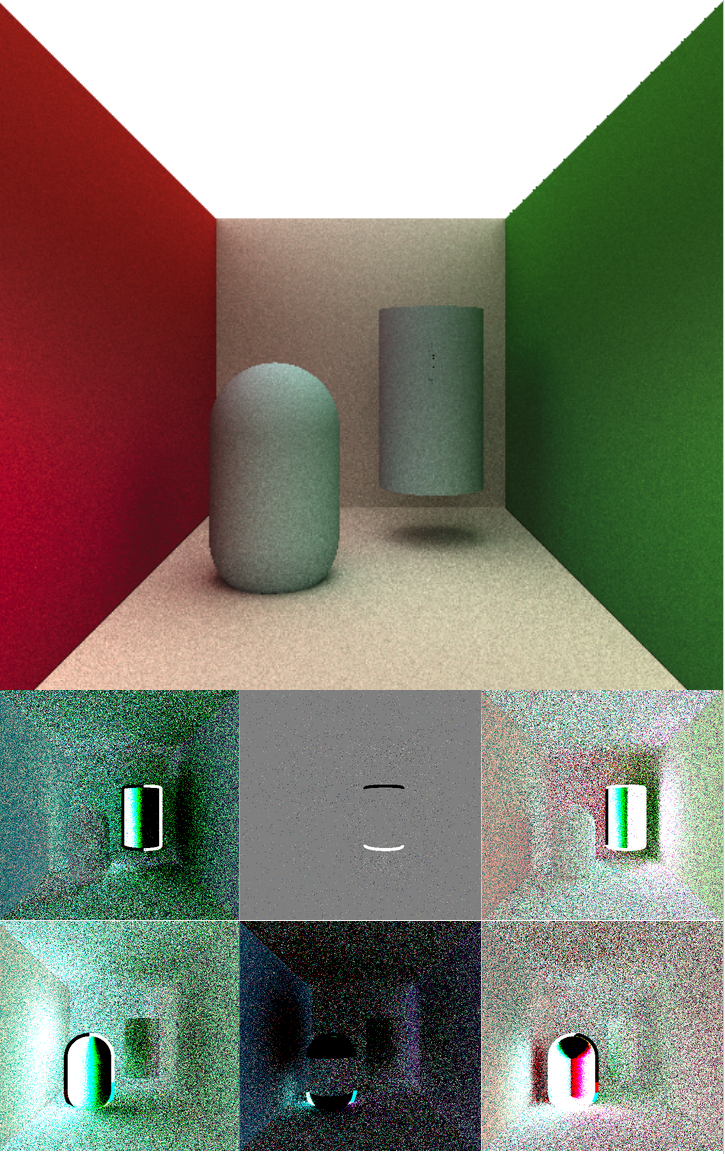
Computing partial derivatives of rendered images with respect to scene parameters, following this method.
Bidrectional Audio Pathtracing
Emre Arsalan, Arman Mohammadi, Henry Earnest, Is Ali Muhammad
Physically-based rendering of spatial audio in 3D scenes, following this method.
Procedural Modeling & Simulation of Bread
Grace Marshburn, Tiffany Huang, Sophie Zhang, Lana Yang-Maccini
Simulating the proofing and rise of bread dough, following this method.
Rendering Explosions
Varun Satheesh, Aman Agarwal, Yuxin Ni, Joel Kim
Efficient rendering of self-illuminating explosions using a lighting grid hierarchy, following this method.
Character Control
Effy Pelayo Tran, Rainer Gardner-Olesen, Anna Le
Teaching a virtual character how to move with a combination of reinforcement learning and motion capture, following this method.
Spatiotemporal reservoir resampling for real-time ray tracing with dynamic direct lighting
Arin Idhant, Trevor Wiedmann, Evan Mickelson

Real-time pathtracing achieving less noise with fewer samples using, following this method.
Stippling
Chengfan Li, Wendi Liao, Yixuan Liu
Generating stippled versions of images using this method and this method.
Illumination-Guided Example-Based Stylization of 3D Renderings
Autumn Tilley, Adam Bredvik, Olena Mursalova
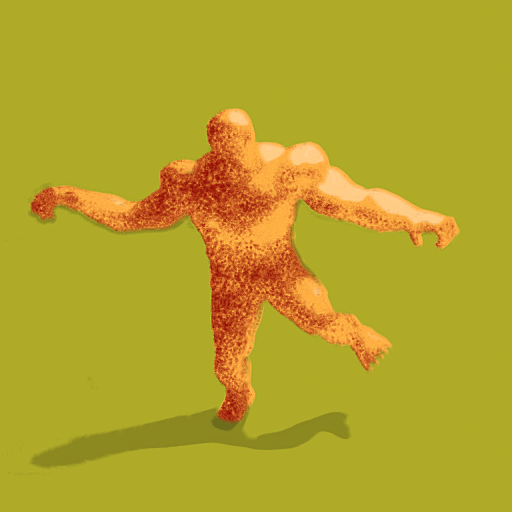
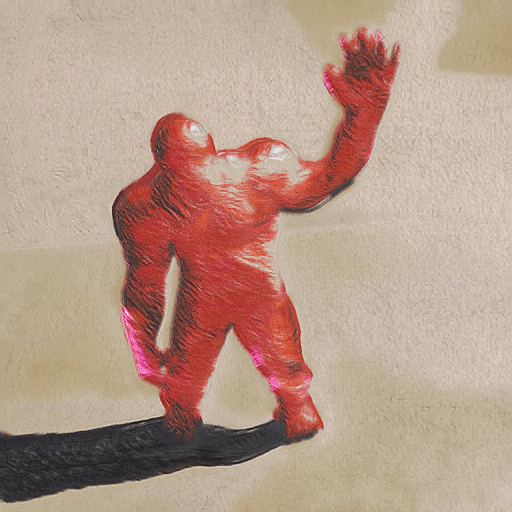
Stylizing 3D renders using hand-drawn/painted art based on this paper.
Spatiotemporal reservoir resampling for real-time ray tracing with dynamic direct lighting
Josh Yang, Austin Funk, Faisal Zaghloul, Sebastian Criado
Real-time pathtracing achieving less noise with fewer samples using this method.
Neural Radiance Caching
Jamie Chen, Spandan Goel, Faisal Zaghloul
Speeding up real-time pathtracing by learning to predict radiance using this method.
Optimizing Object Decomposition to Reduce Visual Artifacts in 3D Printing
Ed Bielawa, David Chen, Vivian Lu, Patrick Ortiz
/armadillo.png)
/gypsy_danger.png)
Slicing 3D models into parts so they can be 3D printed better using this method.
A Physically-inspired Approach to the Simulation of Plant Wilting
Daniel Cho, Edward Yan, Luke Riley, John Liu
Simulating how plants wilt using this method.
A material point method for snow simulation
Sarah Roberts, Brandon Diaz, Karim Mouline, Hannah Julius
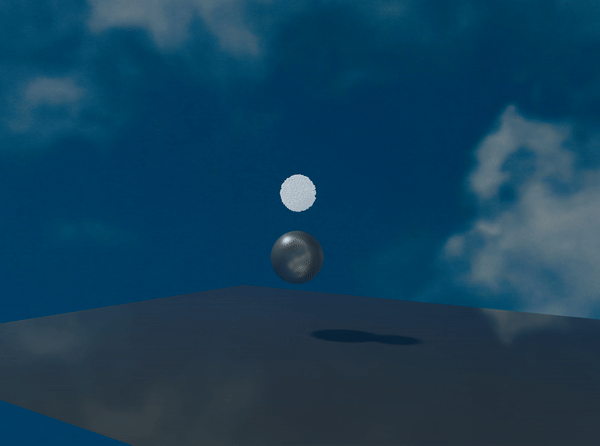
Simulating the dynamics of snow using this method.
Water Surface Wavelets
Max Guo, Kelvin Jiang, Mohammed Khan, Dustin Wu
Simulating water surface dynamics using this method.
Physics-Integrated 3D Gaussians for Generative Dynamics
Yiyang Zhang, Zixuan Guo, Runfeng Li, Jared Cambier
Adding physics to 3D Gaussian splatting using this method.
Simulating Ocean Water
Jessica Wan, Joel Manasseh, Michael Foiani, Sebastian Park
Simulating and rendering ocean waves using these methods.
Authoring Landscapes by Combining Ecosystem and Terrain Erosion Simulation
Dominic Chui, Zach Weachter, Ian Rider


Simulating the evolution of landscapes over large time periods using this method.
SurfaceBrush: From Virtual Reality Drawings to Manifold Surfaces
Anh Duong, Dylan Lee, Chloe Ye
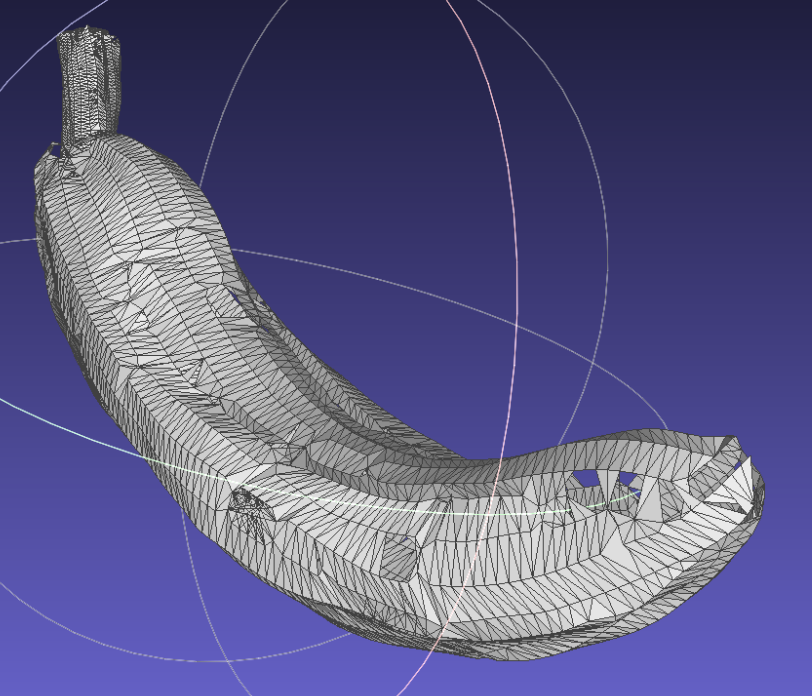

Turning VR drawings into triangle meshes using this method.
Green Coordinates
Junyu Liu, Yuqiao Guan, Feiyue Zhang
Cage-based deformation of 2D and 3D shapes using this method.
Normal-Driven Spherical Shape Analogies
Alex Ding, Neil Xu, Jean Yoo

Example-based geometry stylization of 3D shapes using this method.
Simulating Ink in Water
Helen Huang, Austin Miles, Mandy He, Tianran Zhang

Simulating ink diffusion in water based on this method.
Approximate Convex Decomposition
Orion Bloomfield, Will Chen, Krishi Saripalli, Richard Tang
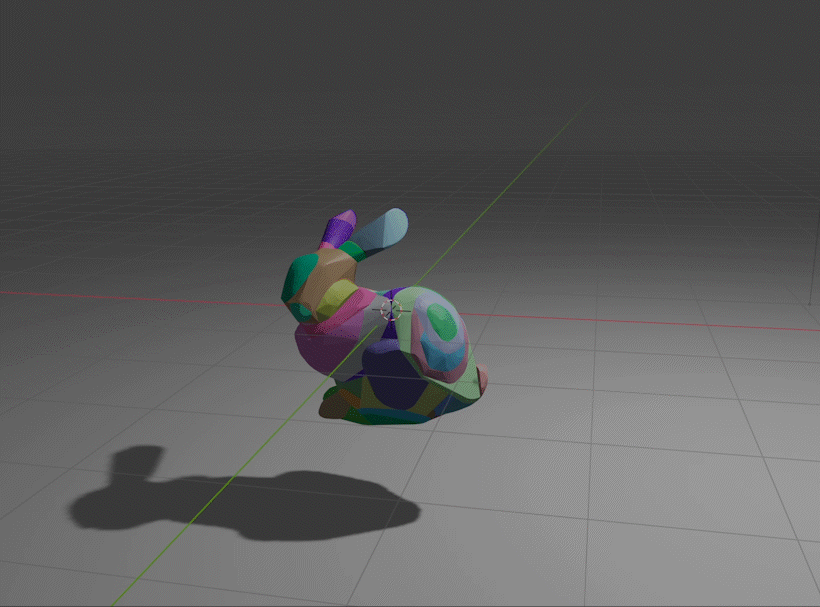
Breaking 3D objects into approximately-convex pieces based on this method.
Intrinsic Triangulations
Anh Truong, Anna Zhao, Mehek Jethani
Computing intrinsic triangulations of meshes using this method.
GPU Path Tracing with Metal
Coco Kaleel, Jed Fox

Implementing path tracing (+ subsurface scattering) on the GPU using Apple's Metal framework.
Wavelet-based Water
Logan Dooley, An Nguyen, Nicholas Vadasz
Simulating water surface waves using this method.
Animating Stylized Caustics
Yaxin Liu, Yingtong Yu, Yutang Liu, Yuanbo Li
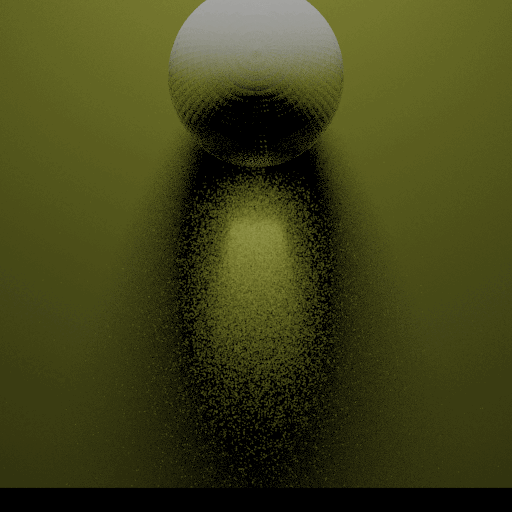
Animating the shape of caustic light patterns according to this method.
Liquid Simulation with the Fluid Implicit Particle (FLIP) Method
Adrian Chang, Yiwen Chen, Zack Cheng, Brynn Chernosky
Simulating liquids using this method.
Wildfire Simulation
Anderson Addo, Peter Li, Ziang Liu
Simulating wildfire propagation using this method.
Photon Beams
Paul Biberstein, Neev Parikh




Rendering better images faster using volumetric photon mapping, based on this paper.
Generating Digital Painting Lighting Effects
Marc Mapeke, Paul Molnar, Sean Zhan
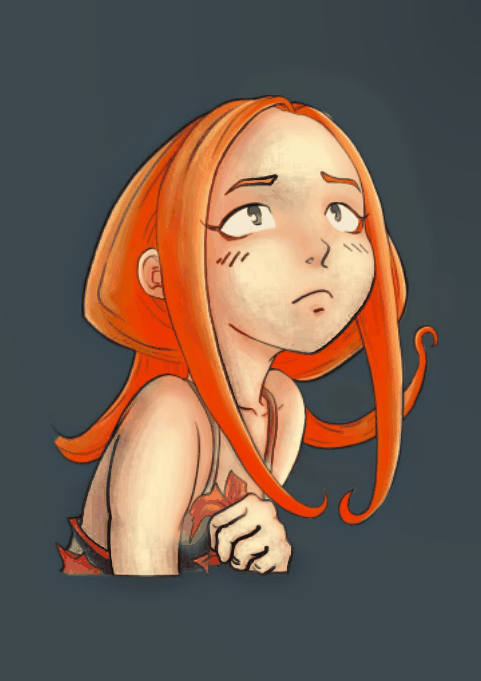
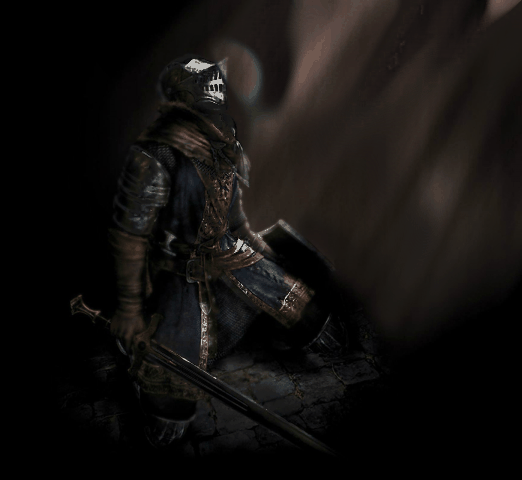


Relighting digital paintings, based on this paper.
Conditional Neural Radiance Fields for Synthetic Scenes
Jianxin Gu, Nick Huang, Arman Maesumi



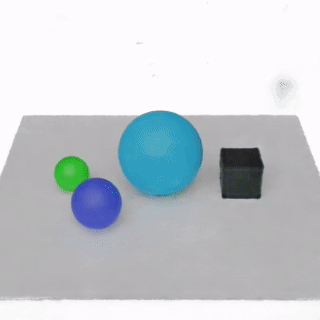
Training NeRF representations of 3D scenes with controllable attributes (light intensity, light position, material properties).
Neural Collision Detection
Ji Won Chung, Aditya Ganeshan, Dylan Hu
Training a Neural SDF representation of a deformable object to perform accurate collision detection during physical simulation, based on this paper. The first video shows how the ball misses colliding with the hand when collisions are computed against the (low res) tetrahedral simulation mesh. The second video shows how this collision is correctly detected when using the neural SDF.
Smoke Simulation
Anna Finkelstein, Alex Mina, Zach Mothner, Danielle Rozenblit
Simulating smoke, based on this paper.
Stylizing 3D Renders by Example
David Charatan, Vikas Thamizharasan, Qian Zhang, Andrew Peterson
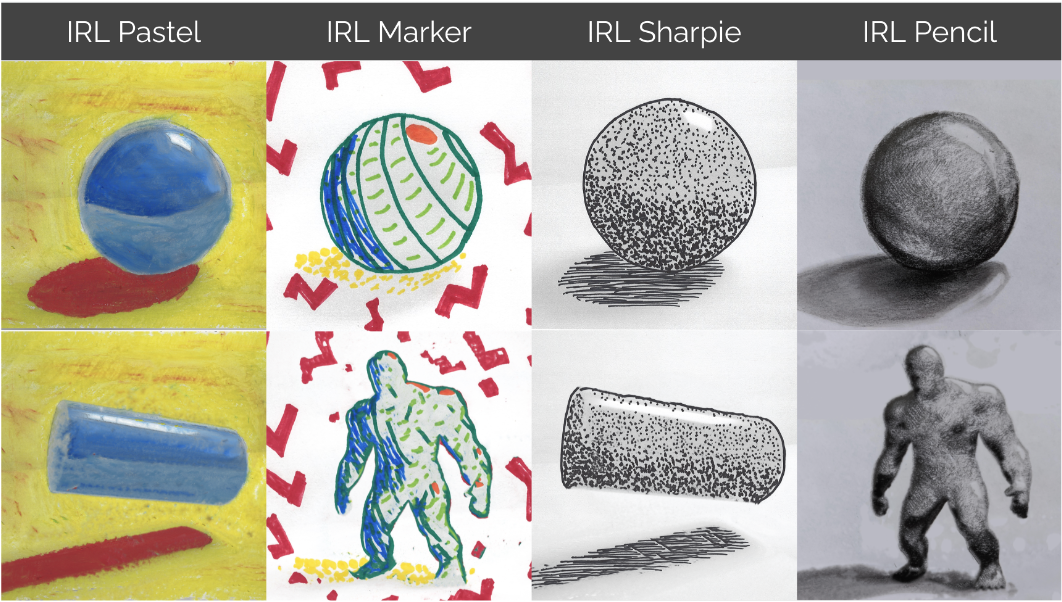

Stylizing 3D renders using hand-drawn/painted art based on this paper
Stylizing Videos by Example
Bryce Blinn, Isa Milefchik, Caleb Trotz, Maggie Wu
Stylizing videos using hand-drawn/painted art based on this paper
Snow Simulation
Jenna Soenksen, Jeff Demanche
Simulating the motion of packed snow based on this paper
SurfaceBrush
Henry Stone, Katie Scholl, Meredith Young-Ng, Selena Ling

Converting strokes painted in VR to watertight surface meshes based on this paper
Smoke Simulation
Tucker Berckmann, Ryan Greenblatt
Simulating the motion of smoke and fire based on this paper
Cloud Simulation
Vicki Tan, Brad Guesman, Kelly Wang


An implementation of cumuliform cloud simulation with computational fluid dynamics based on this paper
Volume Rendering
Ruiqi Mao, David Mayans, Arun Drelich, Ashley Kim


An implementation of volume rendering based on algorithms described in this Pixar paper
Stroke-Aggregator
Montana Fowler, Ben Gabinet, Leon Lei, Fawn Tong
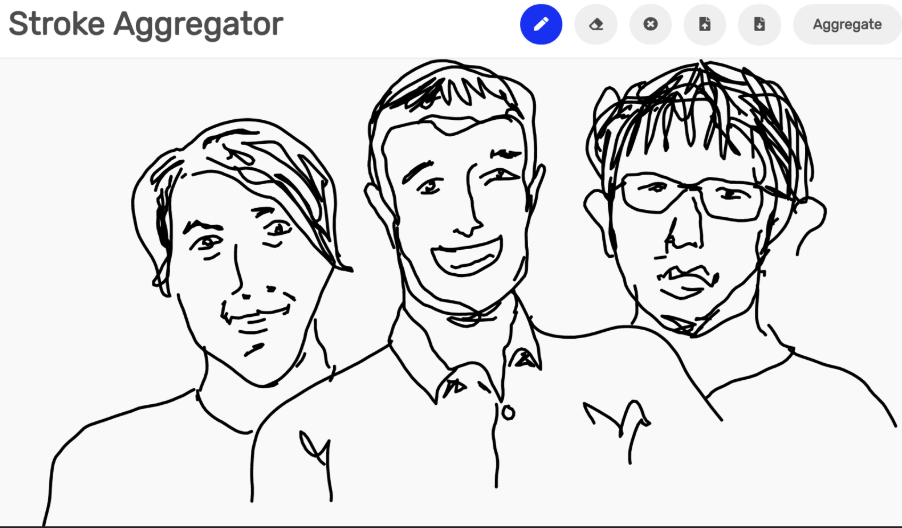
An application to perform stroke consolidation in artist sketches as per this paper.
Image-based material editing
Natalie Lindsay, Purvi Goel, Michael Chen
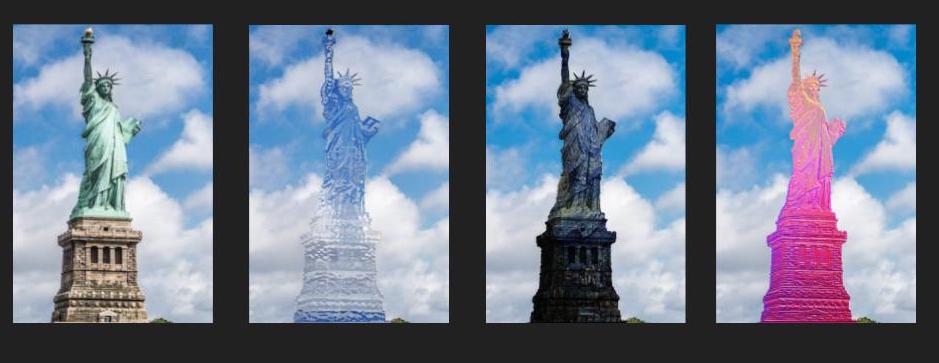
Tools for artists to edit the scene lighting, object materials, and texture patterns in single images.
Liquid Simulation and Surface Tracking
Dylan Tian, Thomas Vandermillen
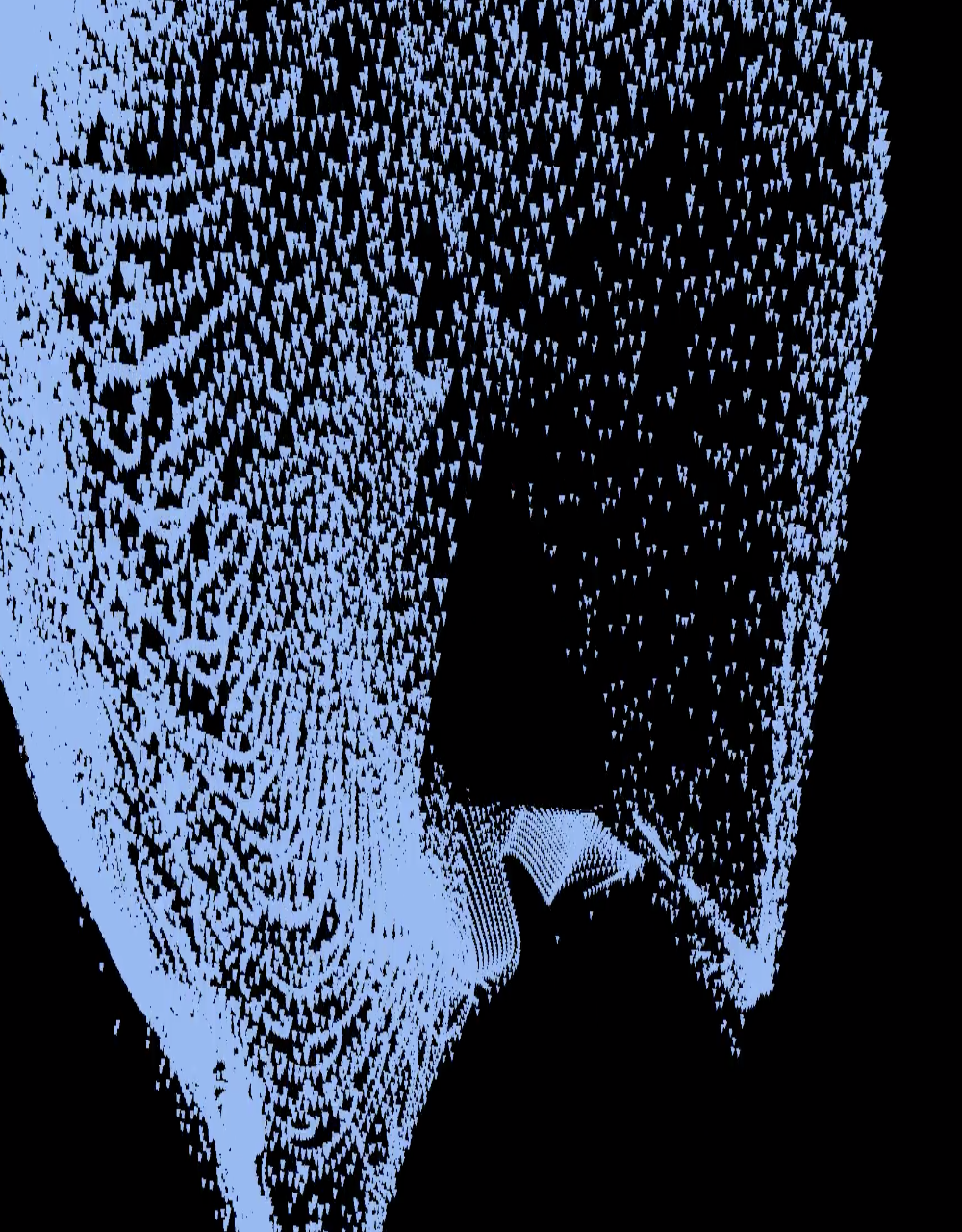
Nothing more graphics than a fluid simulation! Implementation based on this paper
Controlling Caustics
Michael Cosgrove, Grishka Barboy, Brandon Li, Dain Woods
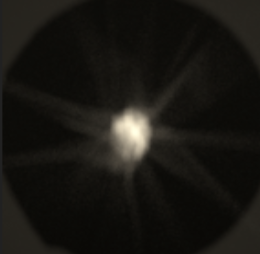
Controlling material shape for bending light to produce fancy caustics, as per this paper
Spatio-temporal Variance-Guided Filtering
Loudon Cohen, Raphael Kargon

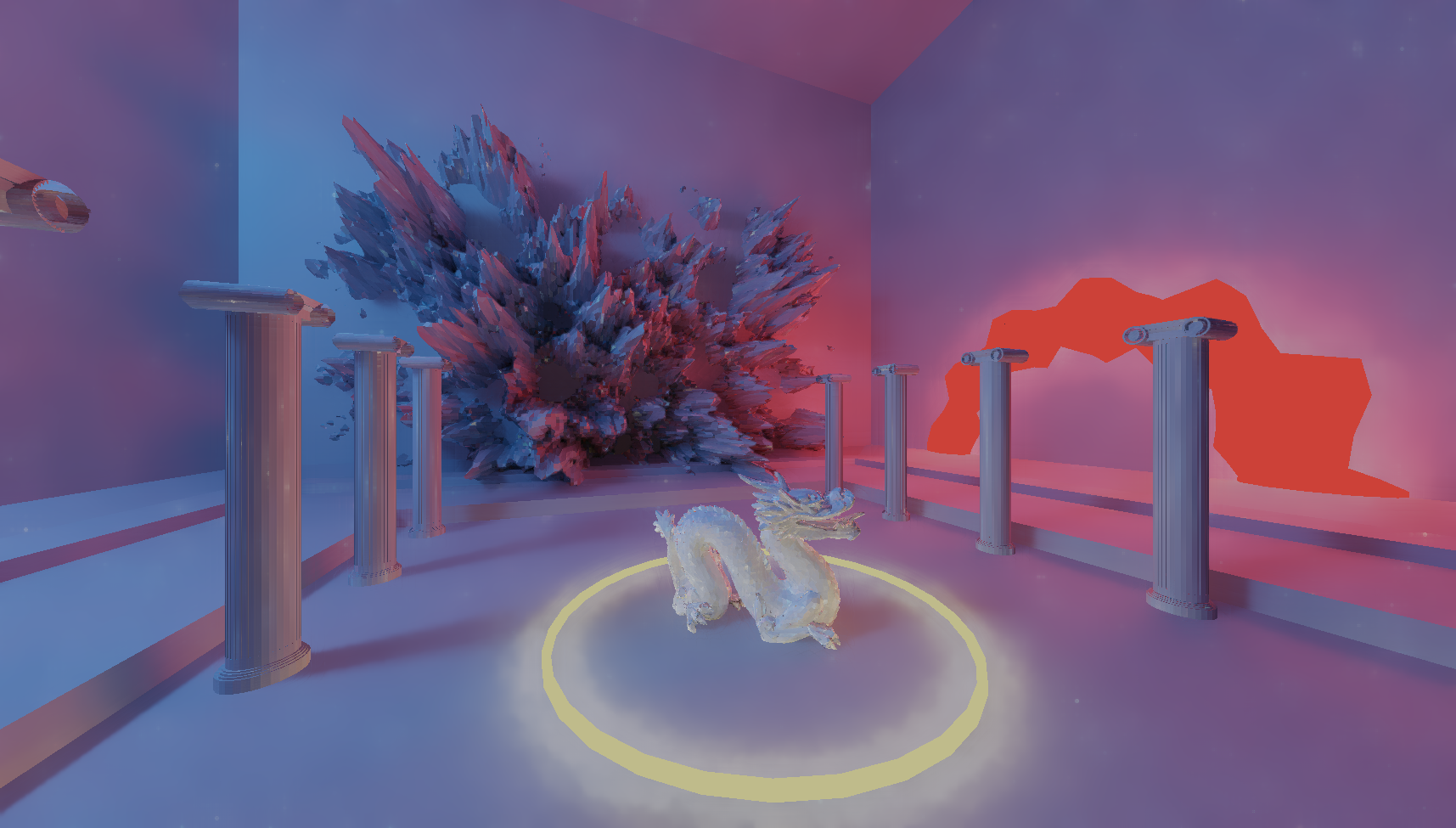
An implementation of SVGF based on this paper. Uses a spatially-aware hierarchical filter combined with temporal accumulation/reprojection to attempt real-time denoised path-tracing.
NPR Renderer
Kai Wang, Tianmu Lan, Ruolan Tang
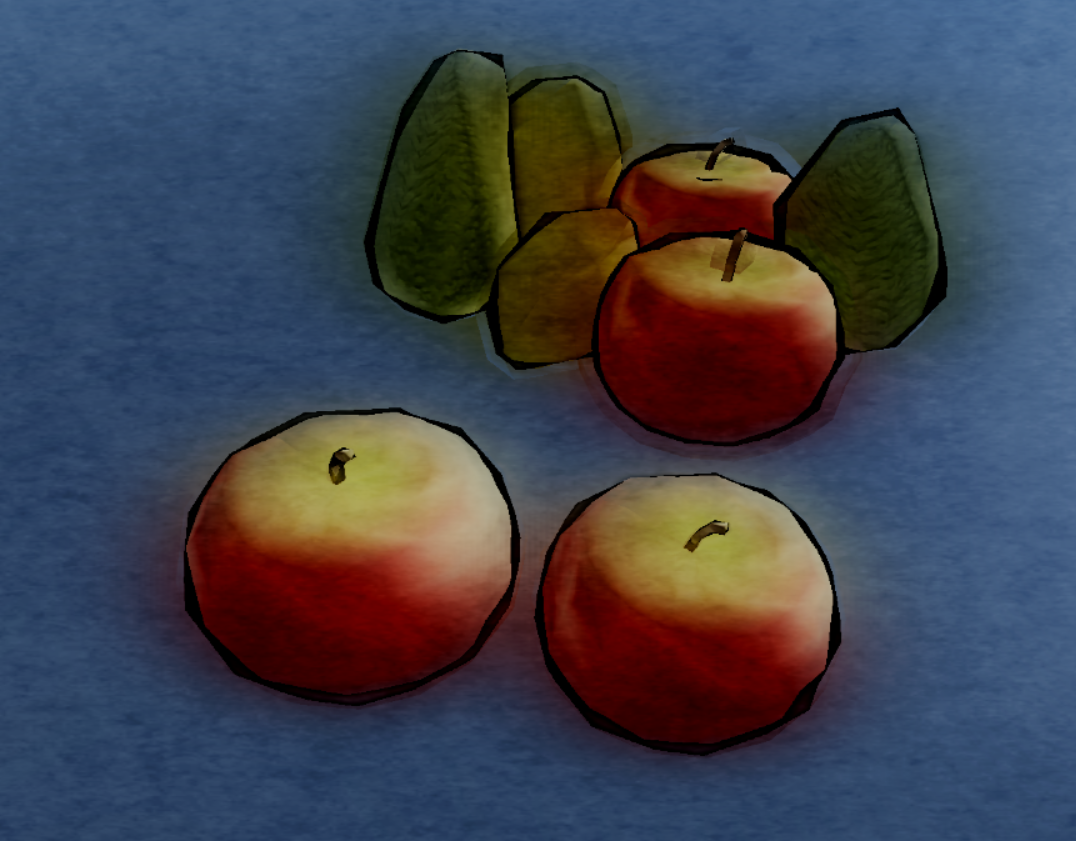
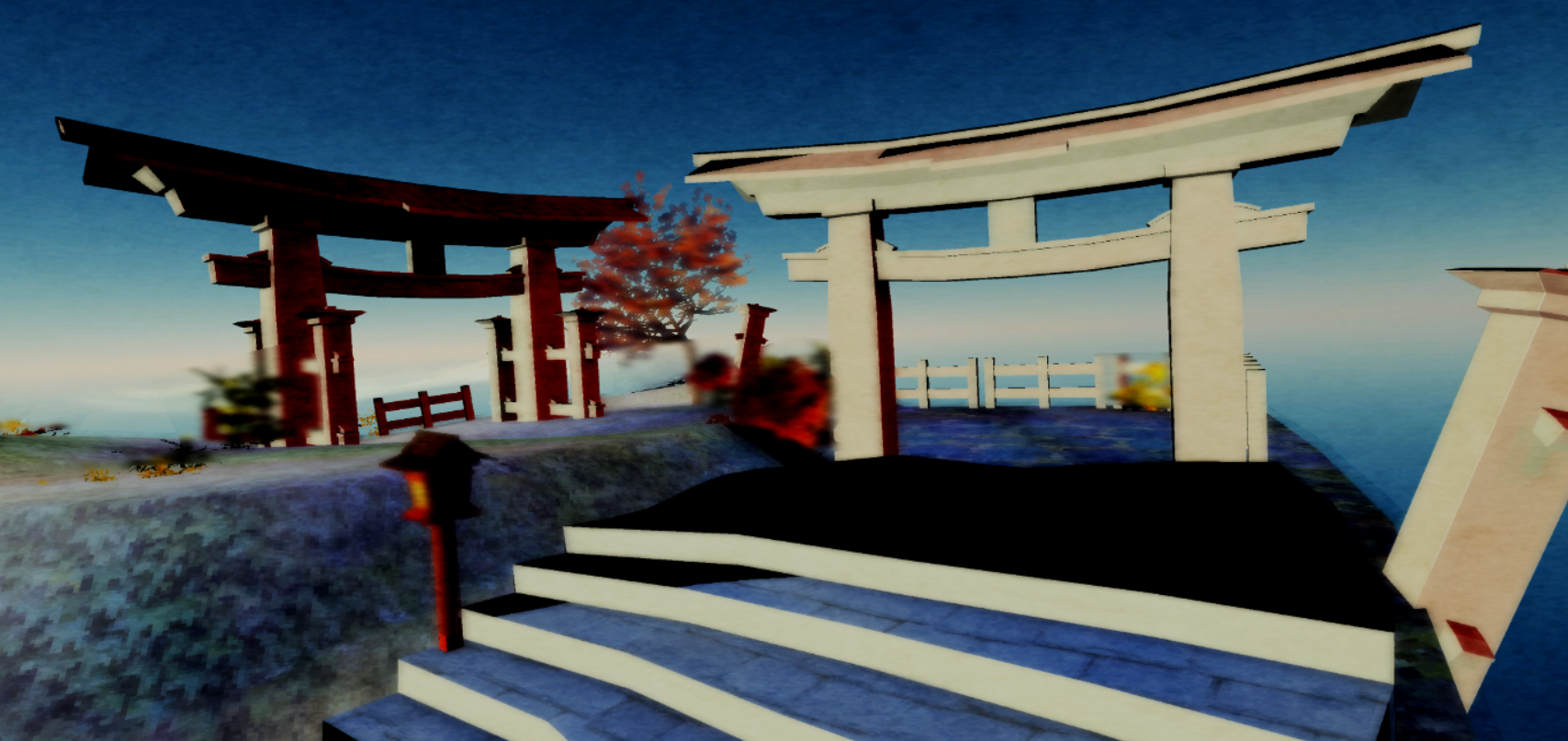
A non-photorealistic renderer with a watercolor and ink style.
Position-based Fluids
Adarsh Narayanan, Daniel Engel, Jeffery Hao
An iterative density solver integrated into the Position Based Dynamics framework (PBD). Based on this paper.
Simulation of Curly Hair
Cecilia Bèrriz, Roman Blum, Nicholas Tomlin, Eli White
A simulation of curly hair based on this work.
Simulates hair using three springs (stretch, bending, and core) and collisions using spheres around each particle and the approximate head model. Utilizes MSAA, single/multi-hair interpolation, B-spline smoothing, billboarding, and hair shading.SMMB Renderer
Sarah Gilmore, Mae Heitmann, Manav Kohli, Ben Weissmann
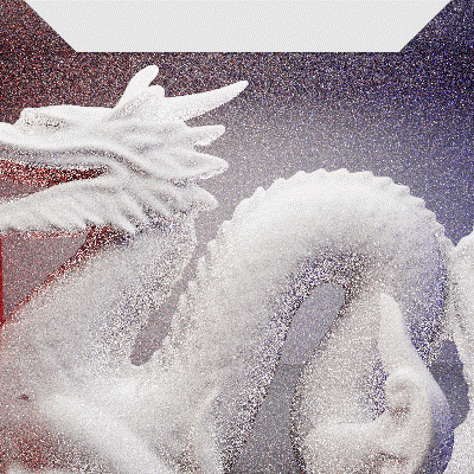
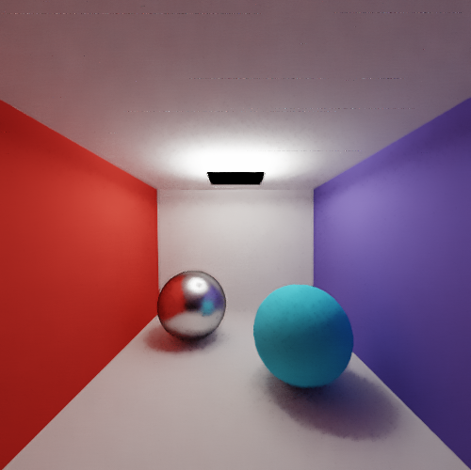
A bidirectional path-tracing implementation with multiple importance sampling, sub-surface scattering, and feature-enhanced denoising.
Rendering virtual objects into photographs
Numair Khan, Patricio Ricaud, Betty Peng
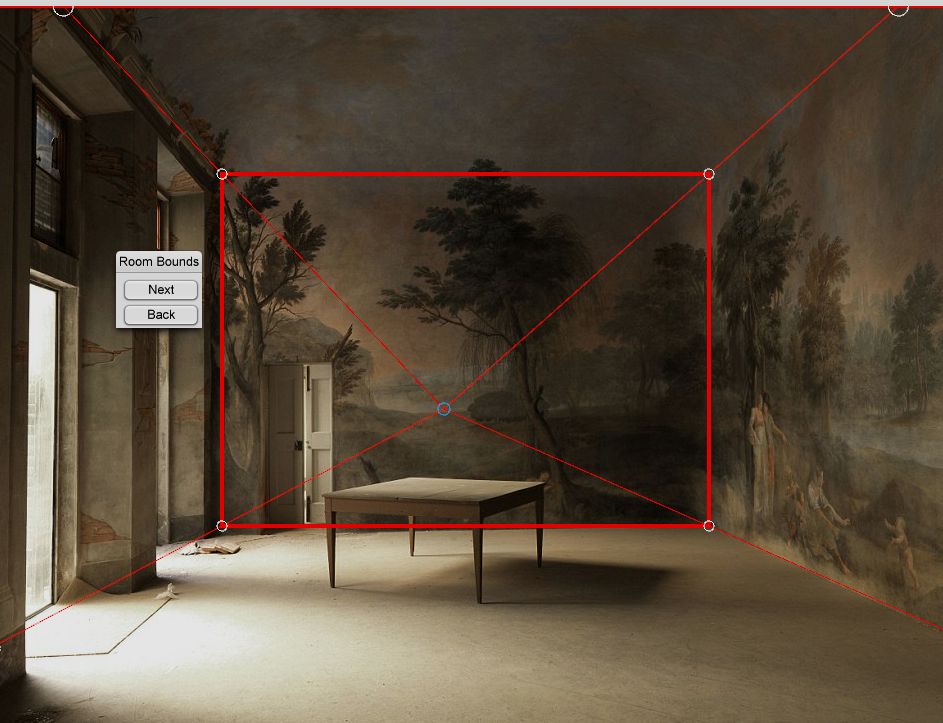
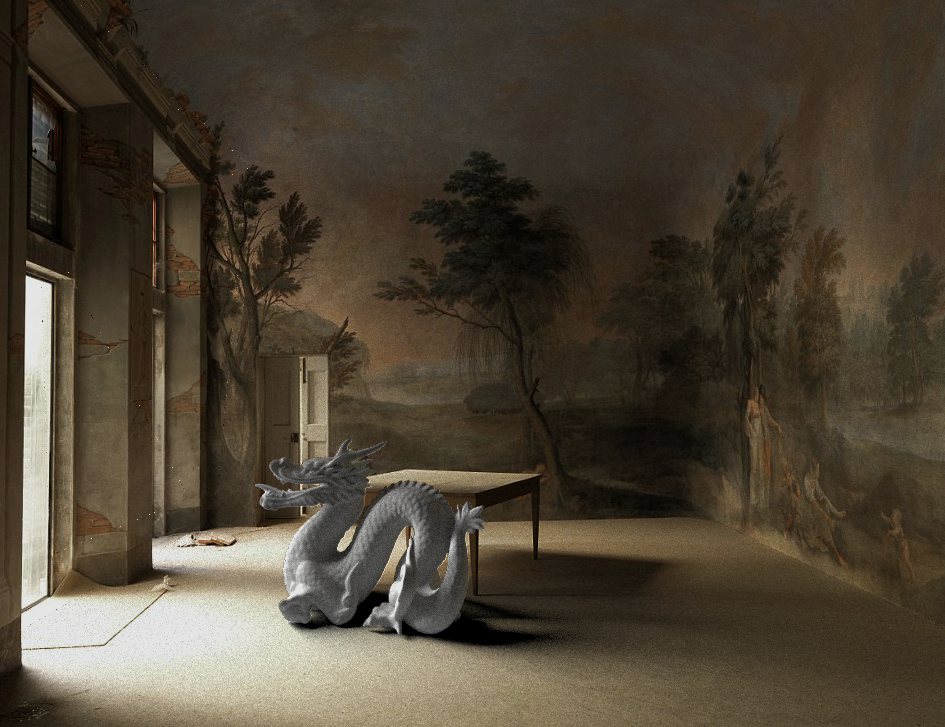
Our project aims to insert a virtual object into a real photograph of a room. We created a user interface to use G3D scenes to model the room, light sources, and simple geometry (i.e. desks, chairs, etc.) based on the photograph. We then place the virtual object into the scene/image and render the two together.
Photon Beams

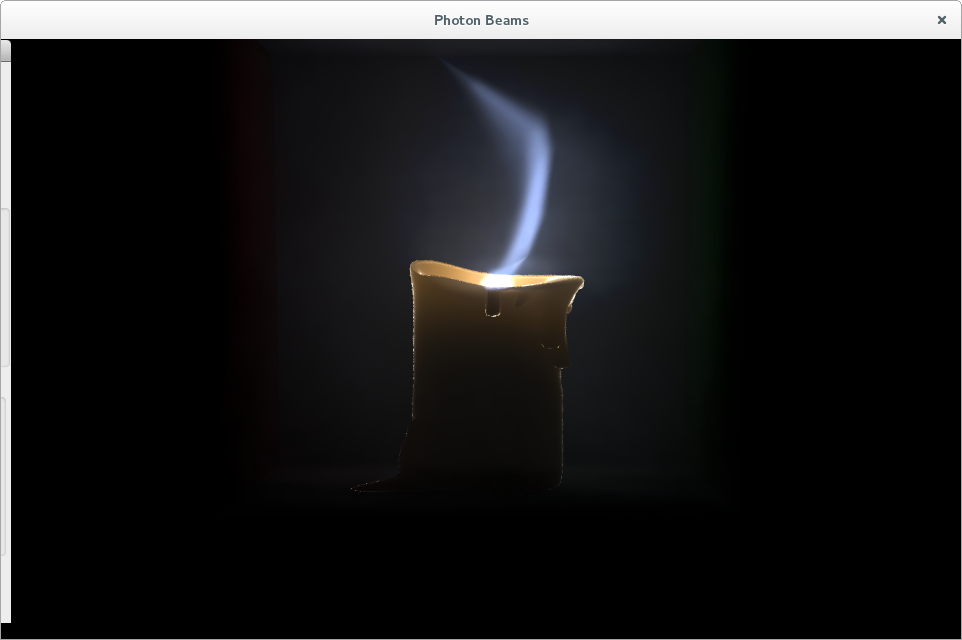
Deformable "knuckles" for realistic hands
Liam Callanan

Unified Particle Systems
Abdullah Yousufi, Neel Virdy, Sam Gondelman
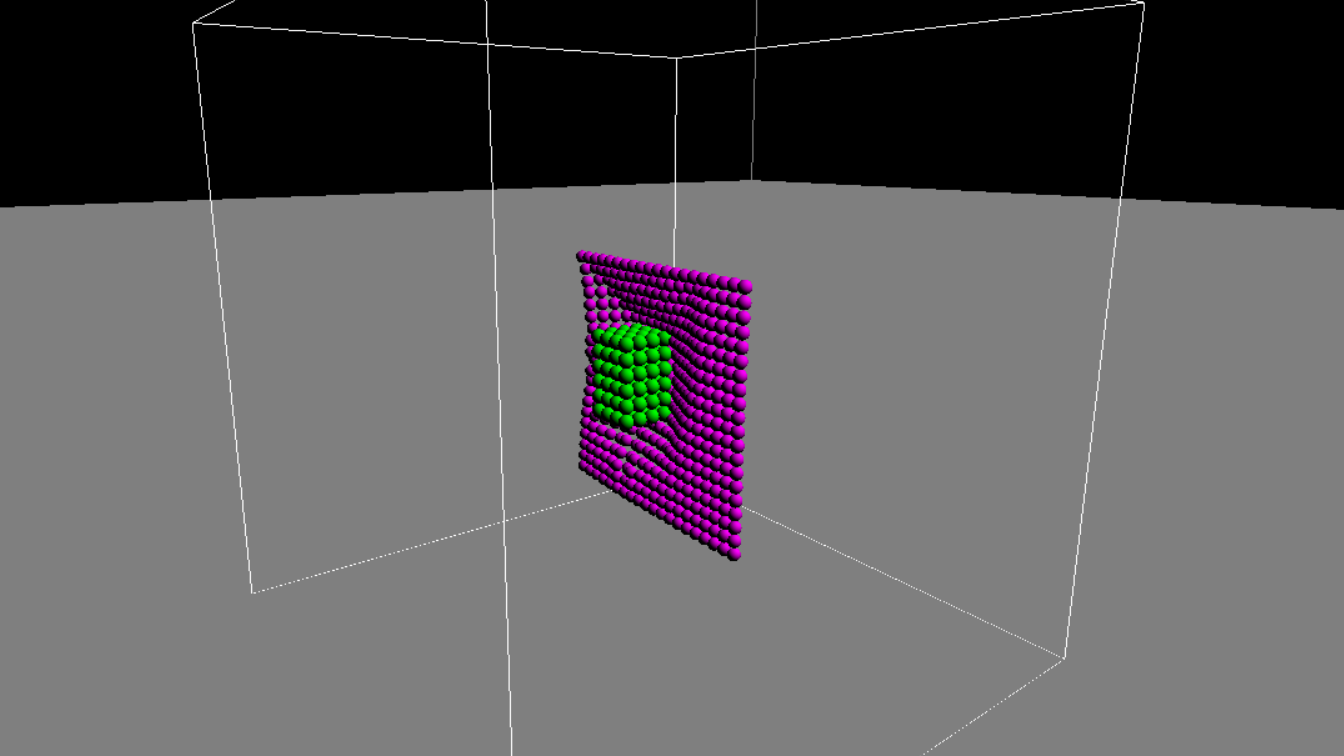
We have designed a GPU based particle system to handle inter-particle interactions. The system is versatile enough to support numerous mediums, including fluids, smoke, rigid bodies, cloth, and granular materials, all in real time. The underlying constraint system is easily extensible to support a wide variety of constraints.
Generation of Unbounded Procedural Landscape using Hydrology
Lucas Priebe, Vijay Narayanan
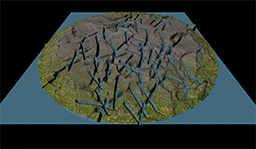
We used the paper "Terrain Generation Using Procedural Models Based on Hydrology" to generate procedural terrain over an endless landscape.
Transforming 3D models into contours with stylized shading
Divya Mahadevan, Josh Tveite, Michelle Lin, Vivian Morgowicz
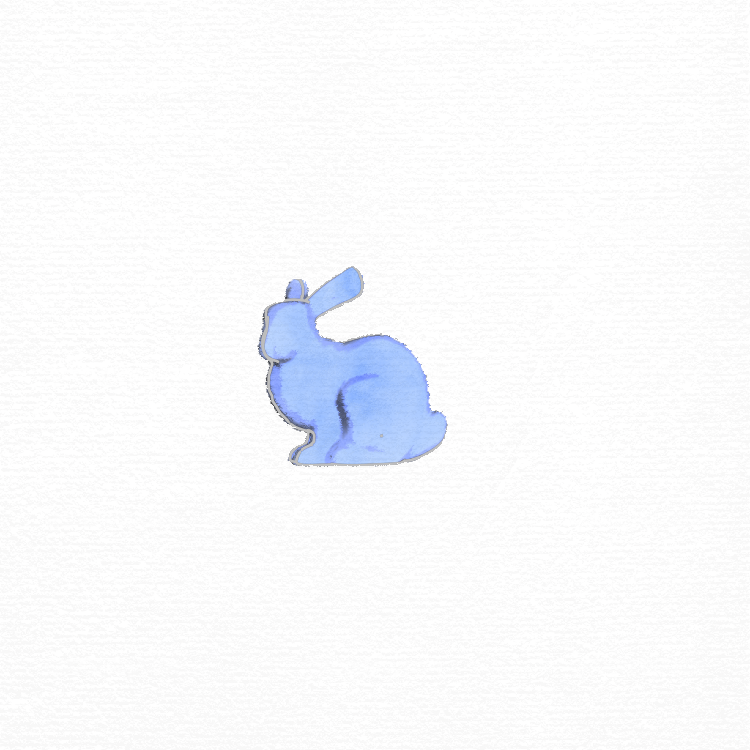
An implementation of the paper “Computing smooth surface contours with accurate topology” by Pierre Benard, Aaron Herzmann, and Michael Kass (2014). We re-mesh and refine 3D models to extract consistent contours. Contours are then composited with a watercolor shader to produce a stylized 2D representation of the original model.
Predictive-Corrective Incompressible SPH Simulation
Zihao Li, Samuel Johnson, Dixuan Yang
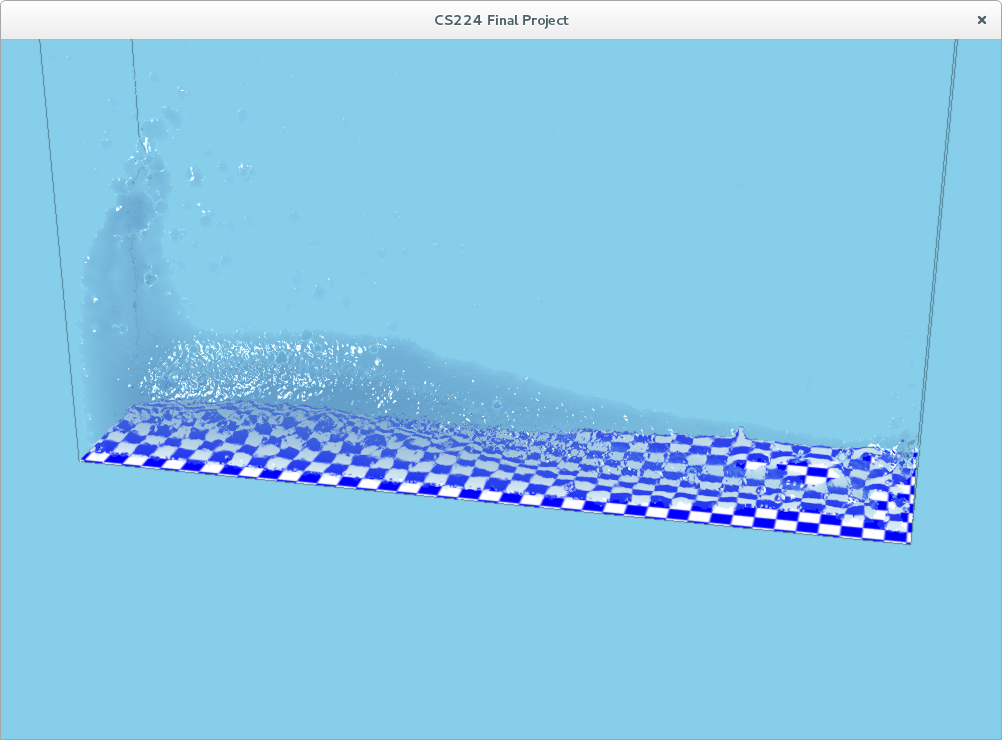
This work is based on Predictive-Corrective Incompressible SPH (PCISPH), which is an improvement of the original SPH simulation method by applying an additional prediction-correction loop to achieve the incompressibility as well as allowing larger simulation timesteps. In order to enhance the quality and stability of this simulation, we integrated concepts from other related papers such as enabling self-adjusted time steps, applying particle collision tests, using a more practical "cohesion-viscosity-curvature surface tension model", dealing with boundary particle issues result from insufficient neighbors, etc. Once we have the particles simulated, we render them using screen-space fluid rendering with curvature flow. This technique creates a screen space smooth mesh from the particles using a blurred depth map. It also creates a thickness map of the particles. Combining these two maps with realistic shading produces realistic rendering of water in real time.
Shallow Lava Flow Simulation
By Nate Bowditch (nbowditch)
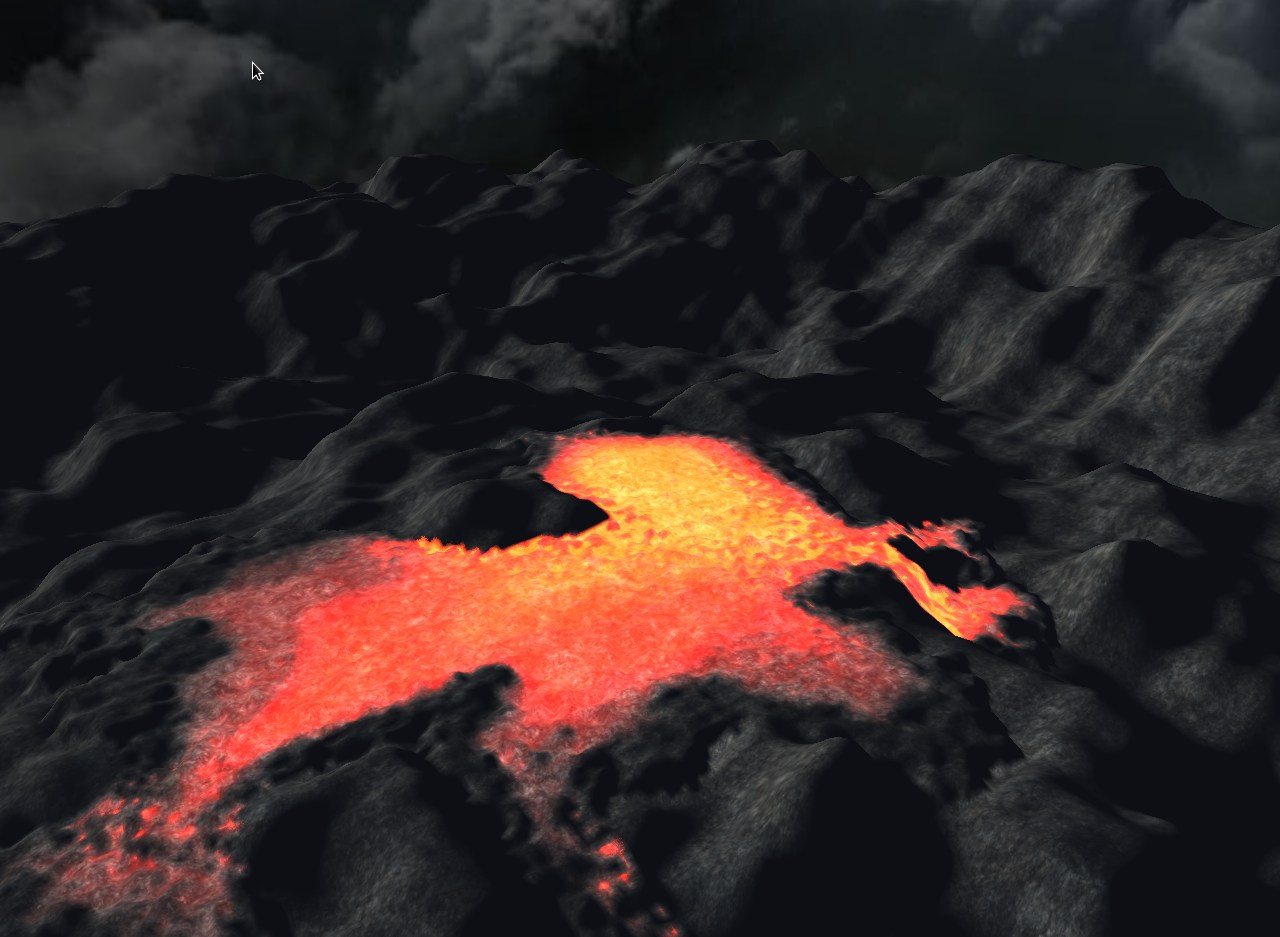
Description: "Lava flow over a heightmap-based terrain is simulated using a simplified version of the shallow water equations. The project started out by implementing the paper Fast Hydraulic Erosion Simulation and Visualization on GPU by Xing Mei, Philippe Decaudin, and Bau-Gang Hu. In this paper, values such as the flow and height of fluid at each cell on a grid are stored on the GPU in the pixels of textures. These values are used to redraw the mesh of the fluid after each timestep as well as calculate how the fluid will move. To make this work for lava, heat energy is tracked across cells, and over time, heat energy slowly approaches the temperature of the environment. The average temperature between adjacent cells is made to be proportional to the cross-sectional area of the virtual pipe connecting the adjacent cells. This virtual pipe limits the flow between adjacent cells; thus, temperature is made to have an effect on the viscosity of the lava, where hotter lava is less viscous. To get the lava to be a realistic color, there is a simplified integration over wavelength energy values found via Planck's law. Hotter lava appears bright orange and cool lava appears dark red or black."
Unified Particle Solver
An implementation of Macklin et. al's Unified Particle Physics for Real-Time Applications for both the CPU and GPU.
This physics simulation was implemented on both the CPU (leveraging the Qt framework) and GPU (using CUDA) as a final project for Brown University's graduate-level course CSCI2240: Interactive Computer Graphics by Evan Birenbaum '15, Logan Barnes '15, and Geoff Trousdale '15.
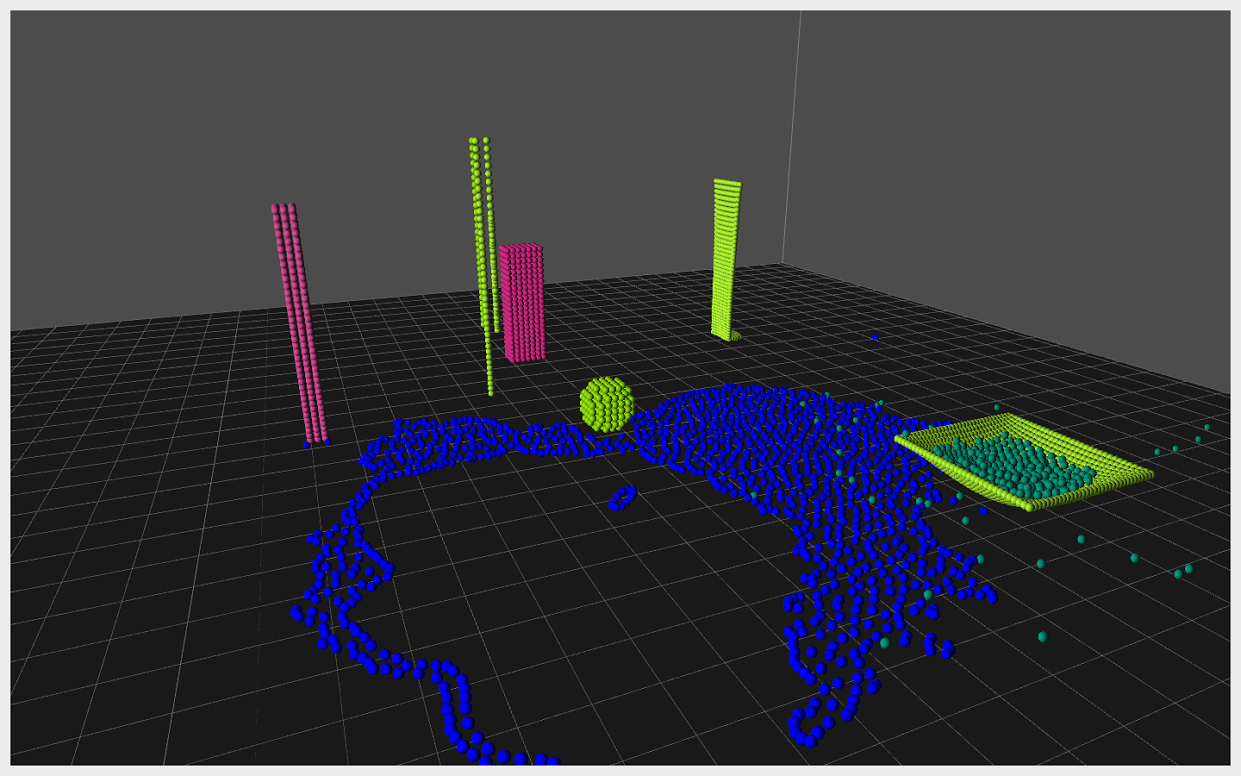
Hairy Potter and the Real Time Hair
Physical simulation and GPU rendering of hair and fur in real time utilizing techniques from a salmagundi of papers By Mike Ravella (mravella), Brandon Montell (bmontell), and Andrew DiMarco (adimarco)
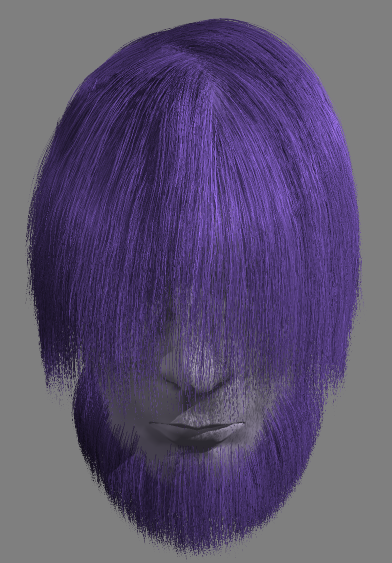
Real-time Hair from Mike Ravella on Vimeo.
Material Point Snow Simulation on the GPU
An implementation of a paper by Disney (A Material Point Method for Snow Simulation) that was improved on by using CUDA to move calculations to the GPU. Team members are: Max Liberman (mliberma), Wil Yegelwel (wyegelwe), Eric Jang (evjang) and Tim Parsons (taparson). See the project page for more information.
VolumeViz
Volume visualization of the human brain, or other 3D models, using slab-based raycasting and rendered using CUDA. Team members are: Robin Martens (rmartens) and Jake Stern (jastern).
Interactive Non-Photorealistic Rendering
For our final project we implemented a non-photorealistic shader based on Gooch et al. [1999] with silhouette edge detection using geometry shaders. As well, we implemented a non-photorealistic based smoke effect and its physical simulation using ODE (physics engine) according to McGuire et al. [2006] Our final product was a simple airplane shooter game for showcasing the effects and shaders we created. Team members are: Arthur Yidi (ayidi), Jixuan Wang (jw16) and Michael Murphy (mjm9). See the project page for more information.

